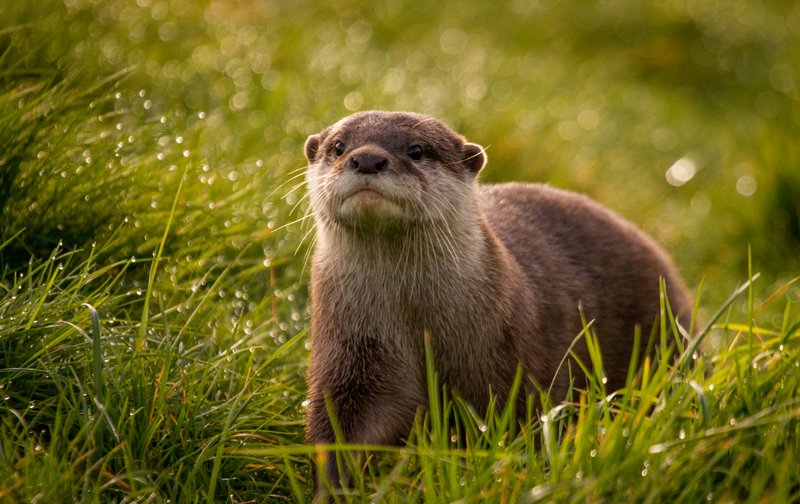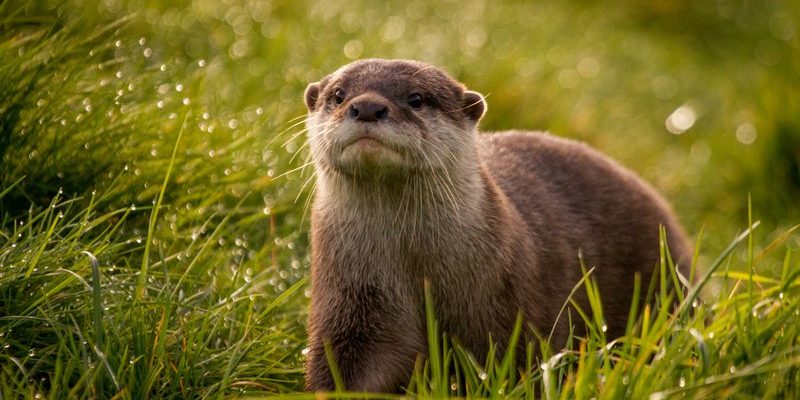
In many cultures, the river otter symbolizes important lessons about life, community, and adaptability. Think of them as nature’s little comedians, reminding us to embrace joy and find delight in even the simplest of moments. Just like how a river winds through different landscapes, the river otter’s presence threads through various tales and traditions, adding texture to our understanding of wildlife and our relationship with it.
Let’s dive into the fascinating ways river otters are portrayed in different cultures and folklore and explore what these stories reveal about our connection to nature.
River Otters in Native American Folklore
Many Native American tribes hold the river otter in high regard. In some cultures, they’re seen as *tricksters*, much like the coyote or raven. They embody cleverness and adaptability, teaching valuable lessons about survival and resourcefulness. These stories often highlight the otter’s playful nature, emphasizing the importance of laughter and joy in daily life.
For instance, in the stories of the Chippewa tribe, the river otter is depicted as a *strong swimmer* and a capable hunter. They represent the balance between playfulness and seriousness, as their antics in the water lead to more profound messages about community and cooperation. This cheeky creature encourages children to embrace their wit and creativity while reminding them that life’s challenges can also be met with a sense of humor.
Another example is how some tribes use otter skins in rituals, showcasing their esteemed position in these cultures. When wearing otter pelts, it is believed that one can channel the spirit of the otter, gaining its strength and agility in navigating life’s rivers.
Symbolism in Celtic Mythology
In Celtic mythology, river otters have a dual nature. They are seen both as playful beings and as symbols of mystery and transformation. Otters are often associated with the goddess *Brigid*, who embodies healing and inspiration. Just like Brigid, otters remind us to embrace both the light and the dark within ourselves.
Moreover, the otter’s connection to water symbolizes *emotional healing*. In Celtic stories, they are portrayed as guardians of water bodies, representing the flow of emotions. Their presence in folklore encourages people to dive deep into their feelings, much like the otters dive below the surface, urging us to explore the depths of our own emotional landscapes.
Additionally, the otter is sometimes viewed as a bridge between the earthly and spiritual realms, implying that those who connect with nature can gain insight and wisdom through animal spirits. This aspect highlights how deep connections to animals can offer guidance on our journeys.
The River Otter in Asian Cultures
In various Asian cultures, river otters are often appreciated for their playful nature and social behavior. In Chinese culture, they symbolize *joy* and *good fortune*. The otter’s playfulness is seen as a positive trait that encourages harmony and happiness in family and community life.
For example, in certain folklore, otters are depicted as characters that help humans. They often assist fishermen by showing them the best spots to catch fish, symbolizing a partnership between humans and nature. This cooperative relationship highlights the importance of respecting wildlife and the natural world, reminding us that we are all part of a larger ecosystem.
Furthermore, some Japanese tales reference otters as protectors of rivers, emphasizing their role in maintaining balance in nature. They remind us that every creature, big or small, plays a critical role in the environment, promoting the idea of *interconnectedness*.
Otters in Modern Media and Literature
In contemporary culture, river otters continue to capture our imagination through various forms of media. From animated movies to children’s books, these delightful creatures often symbolize adventure and curiosity. For example, in the beloved children’s book series *”The Wind in the Willows,”* the character of Otter is portrayed as loyal and protective, embodying the spirit of friendship and community.
Furthermore, documentaries and nature programs showcase the river otter’s playful behavior, causing audiences to admire these creatures even more. These portrayals often emphasize their intelligence and social nature, inspiring a new generation to appreciate wildlife and its habitats.
By seeing otters in media, we are reminded of our connection to the natural world and the importance of conservation efforts. Their playful antics serve as a call to action, urging us to protect their habitats and ensure their stories continue for future generations.
The Playful Spirit of River Otters
What truly stands out when exploring river otters in culture and folklore is their representation as agents of *joy*. They teach valuable lessons about the importance of play, community, and adaptability. Their playful nature encourages us to take life a little less seriously and embrace spontaneity.
You might be wondering how we can apply these lessons in our daily lives. Incorporating moments of joy, whether it’s through spending time with friends or exploring nature, can help alleviate stress and nurture our well-being. Just like otters who play in the water, we can find happiness in the little things, reminding us of the beauty in life’s unpredictability.
In a world that often feels rushed and chaotic, the river otter serves as a gentle nudge to slow down, engage with our surroundings, and cherish moments of joy and laughter. They remind us that connection—both with each other and with nature—is fundamental to our happiness.
Conservation and the Cultural Importance of River Otters
As we celebrate the cultural significance of river otters, it’s crucial to recognize the challenges they face in the wild today. Habitat loss, pollution, and climate change threaten their populations. This brings an added layer of urgency to their representation in folklore and culture, highlighting the need for conservation efforts.
Efforts to protect river otters are showing promise. Organizations are working to restore wetlands, clean up waterways, and educate communities about the importance of these playful creatures. By preserving their habitats, we maintain the stories and lessons they represent in various cultures.
When we think about river otters, we’re reminded that every creature has a role to play in the ecosystem. By advocating for their protection, we ensure that future generations can enjoy the stories and cultural significance these delightful animals bring.
The river otter is more than just an endearing creature; it’s a symbol of joy and adaptability embedded in the cultural fabric of societies around the world. From Native American tales to modern media, these playful mammals remind us of our connection to nature and the importance of living joyfully.
Embracing the lessons from river otters can inspire us to appreciate life’s simple pleasures, nurture our relationships, and take action for conservation. As we move forward, let’s keep the spirit of the river otter alive by advocating for their preservation and sharing their stories with others. In doing so, we honor not only these remarkable creatures but also the rich tapestry of culture and folklore they represent.

